Combining different medium s of art is challenging but there are some people who can manage to do that with a great deal of excellence. You might have seen various works that make use of different art mediums but what you are about to see today is out of ordinary. It is a combination of photography, body art and painting. Aside from that, it also creates unison between the human body and the landscapes of nature. Bodies are painted to unveil to the viewers the beauty of the environment with various textures and shapes. This is what Jean-Paul Bourdier calls Bodsycapes. Bourdier is a California-based photographer who published a book named Bodyscapes and will also be releasing his second book, Leap into the Blue which features a collection of surreal analog photographs that pushes one’s sense of wonder.
While many photographers these days make use of digital cameras, Bourdier doesn’t. He opted to steer clear from technology and stick to the classic way of photography which is a lot harder. It is indeed amazing how he came up with these photographs using analog photography. Well, if you think these are edited, you are so wrong! What you can see are real people swathed in body paint who perform in front of the camera based on Bourdier’s directions. Well, many of you here are surely curios about his works. Let us look into a deeper thought on this from the words of the artist himself, Jean-Paul Bourdier.
Interview with Jean-Paul Bourdier
Q: Your photography work is indeed unique. Can you tell us how Bodyscapes was conceptualized?
A: It came about in as a continuum of my other work . For thirty years I worked in nature with sand and ice then I worked with pigments and then the body and land art . In all cases I was experimenting with what I now see as a fundamental and visibly indivisible particle: the grain of sand, the grain of dry pigments and the body ( from which it is hard to subtract anything).
Q: Why have you thought of creating a seemingly unison of the human body and the beauty of nature?
A: If I occasionally focus on this unison, it is essentially to confirm what I often forget : that I cannot find experientially a limit between this body and the environment; that this body is made of the same atoms as the stars; that everything around me gives birth to my experience (not the other way around); or as it is said in so many traditions that I am born from the earth – before I come back to it.
Q: How do you come up with distinct ideas for every photograph?
A: There are basically three types of situations: first, I am inspired on the spot by the environment; second, my friends suggest ideas, or we come up with them together; or third, I work on sketches in advance for specific places. For my next shoot for example, I have to work for more than six months, everyday in my spare time, adding a few sketches in my drawing books.
Q: What are the preparations you do before a photo shoot?
A: I have been preparing expeditions in West Africa and now in the US almost all my life and it is not different from a super organized camping trip. Otherwise , besides the sketches mentioned above, all is ordinary.
Q: What are the photography techniques that you use?
A: None whatsoever. Everyone in my family is a photographer and I decided early on (for different family reasons) that I will not be a photographer. So I studied architecture and here I am now. They say that you should never resist anything for if you do resist, it will come back and haunt you. I guess I am haunted now.
Q: Photographers oftentimes find it challenging to look for people who would be willingly to pose as subject for their photography. Did you experience the same?
A: In the “Staged Photography” class I teach at UC Berkeley , I ask my students to work with model friends and what I notice is that sometimes our difficulties depend on our own relationship with our own body. Also , most friends involved in any performance knows intimately the beauty of the body. It’s only organized religion and social norms that are in the way of appreciating the body in the same way that we appreciate the beauty of a tree, a flower or an elephant. The beauty is to work with who we are: being awkward is a great source of inspiration. It’s only when we see the body as an object of consumption that we prefer the body at ease and “projecting” some preconceived idea of beauty ,sensuality , grace, etc.
Q: Tell us about your favourite photo and how you came up with it.
A: The photograph of two friends sitting , seen from the back, looking at the landscape and painted like the mountain and sky in the background (on the back cover of the book Bodyscapes) is my favourite photo for it epitomize all the work: I am interested in watching us in the process of watching the world (more than watching the body as an object of desire). Our presence of earth is somewhat insignificant, and sitting sounds probably like a better move than accumulating all the things that my mind tells me I should gather; and last, I am the mountain and the sky; to see myself as separate is the beginning of what some people call “suffering”.
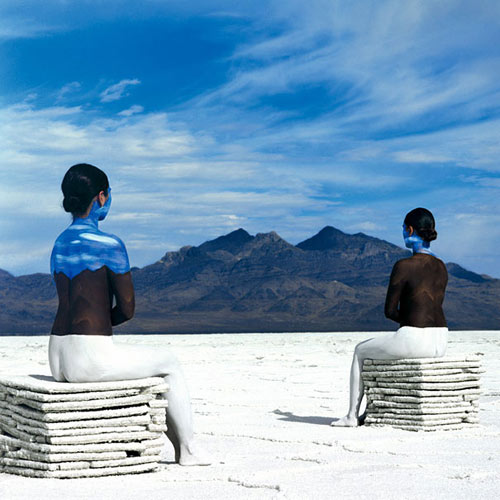
Q: What is your inspiration behind your artistic perspective?
A: In the past two years, I was mostly inspired by old painters’ works but ten years ago I was totally absorbed by colors and patterns on fishes. Sometimes social divisions or the exploitation of the land are at the core of my preoccupations but I also remember working several years with such themes as the unity of heaven and earth, death, the flying body. Now, I am walking on the path of the ancestors.
Q: How do you want your audience to react to Bodyscapes? What certain points do you want to relay to them?
A: If there is anything to relay it is probably the openness of the world in front of us that I usually look at through labels of all sorts. Thinking is great but also brings a lot of misery and if one may enter beingness from time to time (where labels recede in the background), one may live with one’s heart MORE than with one’s mind…
Q: Tell us what lasting impression you want to leave the audience.
A: To walk on this earth as if it is one’s own body.
Q: Why did you choose to use analog photography?
A: Mostly for the beauty of colors and the mystery of not knowing if the picture is OK or not; mostly for costs. I cannot afford a digital medium format . Mostly for resistance – I am not sure that digital cameras are resisting to heat and sand. And finally I love to know where I can retrieve my work. To think that it is not accessible physically and visually as film is, is like preferring a virtual lover to a one “ in the flesh”.
Q: Can you tell us something about your new book? What is its difference from your first book and what can your fans expect from it?
A: Leap into the blue , the new book that will normally come out in December , has a richer acknowledgement of framing as being a tool to create awareness and tension in the production of the image. It also works with several themes that have been dear to my work such as the obsession that mind has with order and geometries. It also deals with the poetry of being two on this earth and finally focuses on the flying body as a suggestion of our spiritual aspirations. Some aspects of the work can be gleaned from the production of a recent Kickstarter: Leap into the Blue Photography Book.
Q: What other things do you do aside from photography?
A: I teach Architectural Design and Visual Studies at UC Berkeley, I write books on traditional dwellings (my last one is Vernacular Architecture of West Africa, Routledge, 2011), I am production designer of most films by Trinh T Minh-Ha , I still paint a bit.
Q: What advice can you give to other aspiring photographers who want to create unique outputs like yours?
A: Design your shots through lots of drawing iterations. Life has a lot to offer but since it is all constructed in the mind (in spite of being apparently outside) one may as well construct images from scratches.
A Glimpse of the Bodyscapes
The works of Bourdier is quite intriguing. One might even be confused on how he was able to unite the human body and the environment. One might also be fascinated on how he mixed different forms of arts to come up with his work. To end up your curiosity, we will showcase some of his excellent works from his first book, Bodyscapes and for his second book, Leap into the Blue. Every masterpiece relays different stories depending on how the audience may look at. We have included some annotations on how we interpret the photographs of Bourdier.
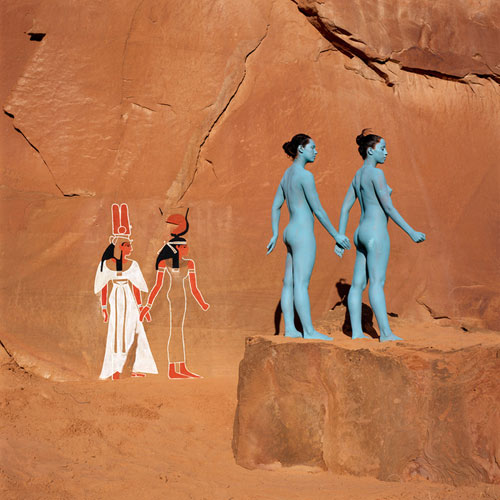
Blue ladies mimicking the painted Egyptian hieroglyphs.
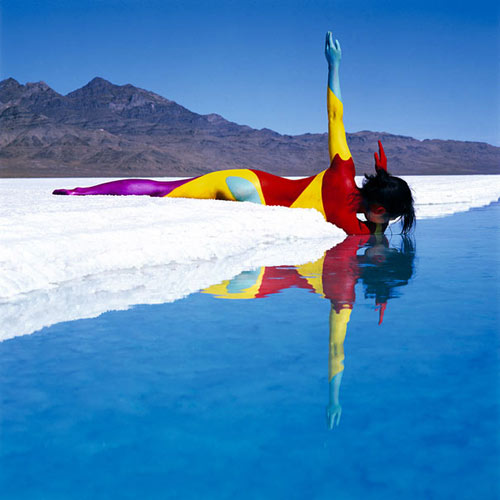
The reflection of the colorful painted body gives more life to the blue water.
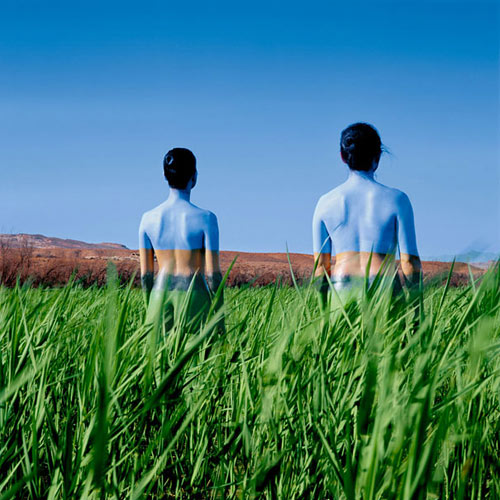
Two ladies blended in with the landscape of mountains and grasses.
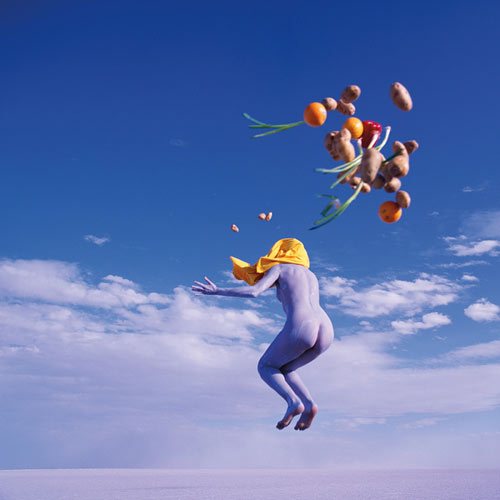
This one is seems to be one with the blue sky with flying vegetables that shows life.
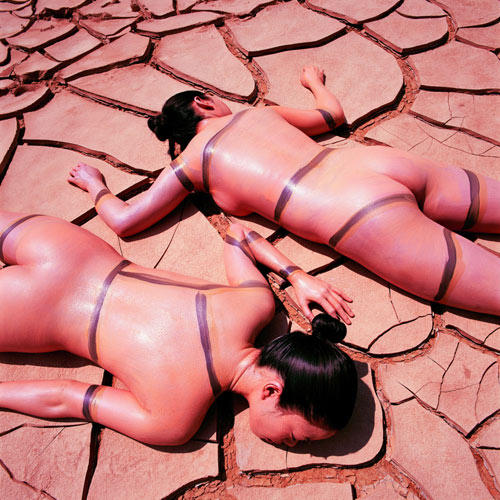
Let the body feel the cracking of the ground as intense heat struck it.
Being alone in an island won’t be in sad since nature is with her.

Closely examining a work of art that is full of stories.
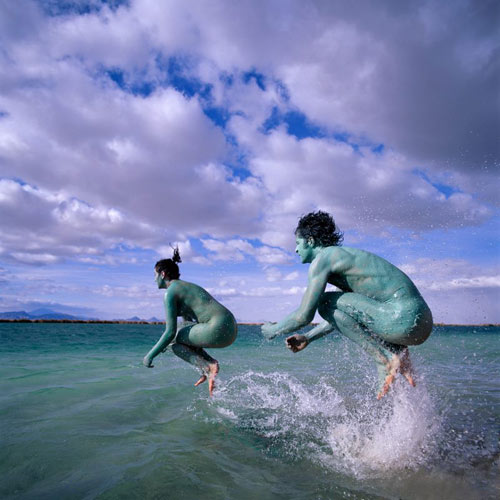
Like traversing the sea by floating above it.
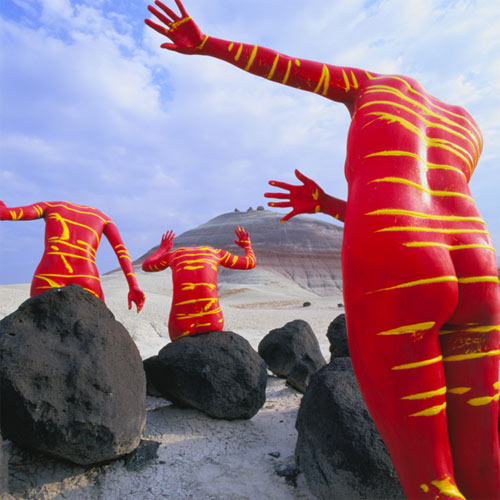
Blazing like fires in the middle of a dry land.
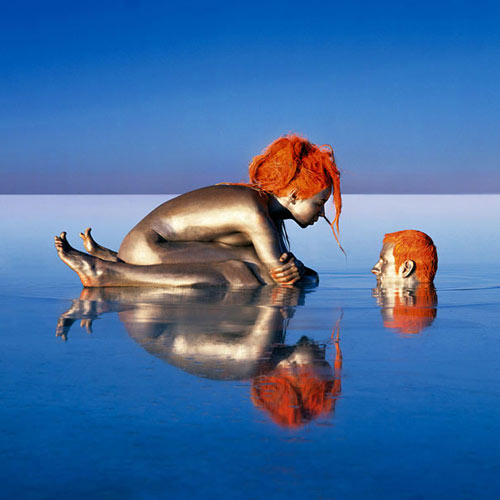
Like two fish lovers of glittering scales in the sea.

Heads blending in with the snow looking stiff and frozen.
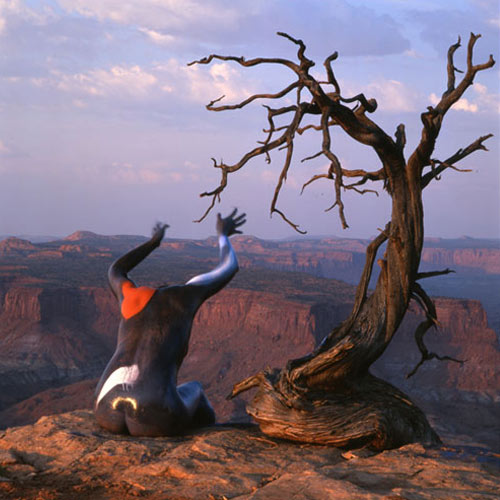
A dead tree still looked good with the painted body beside it.
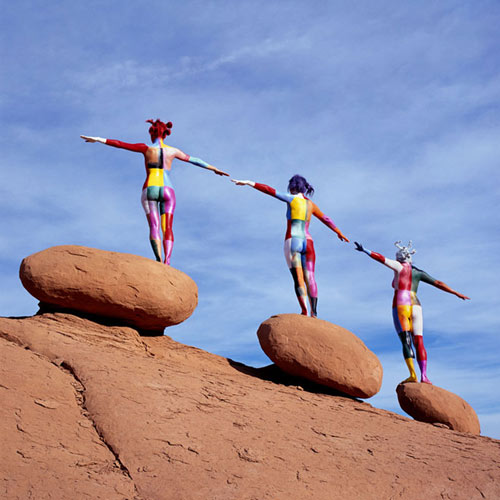
These triplets are like birds that are ready to soar in the air.
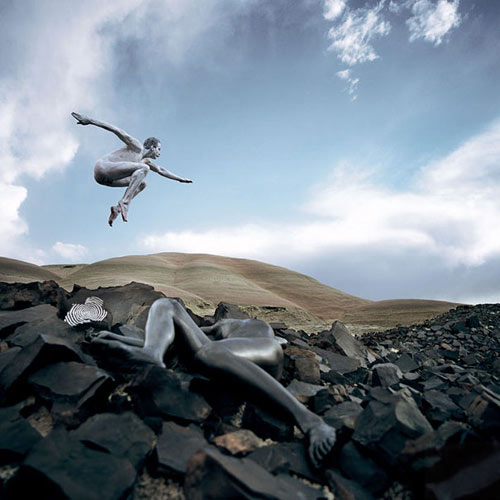
Spot where the man is as he camouflaged with the coals.
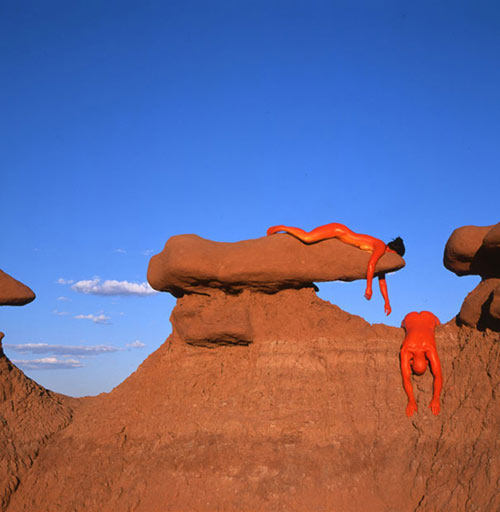
The performers in his shot really made a great impact.
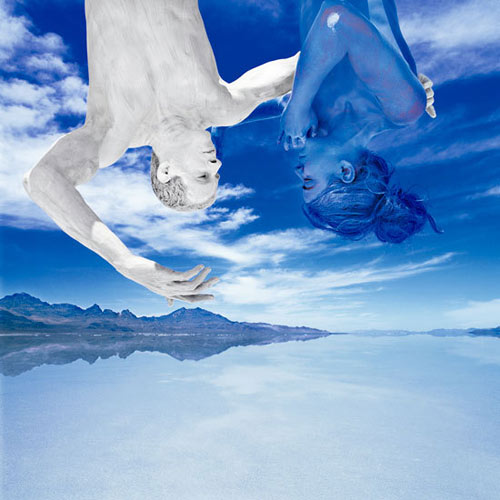
The clouds in the vast blue sky are indeed bonded as one like the couples.
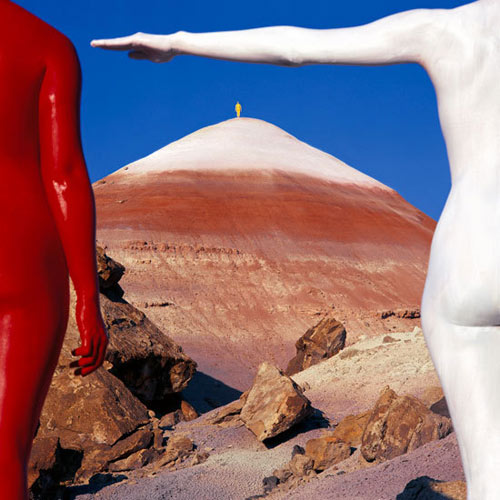
Framed with two bodies of red and white is another yellow one in a distance standing on a mountain’s peak.
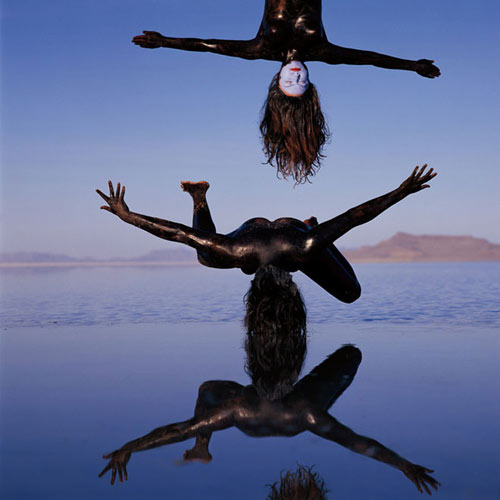
Black is indeed beautiful like what you see in this image.
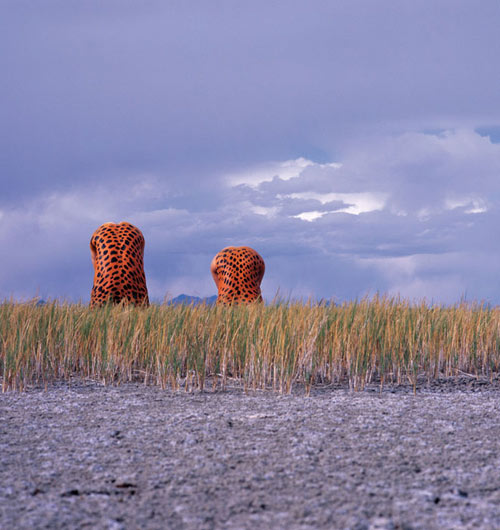
Leopards are ready to run in the field and hunt for their next prey.

Rocks and the soil painted on the body showing different textures of the earth.
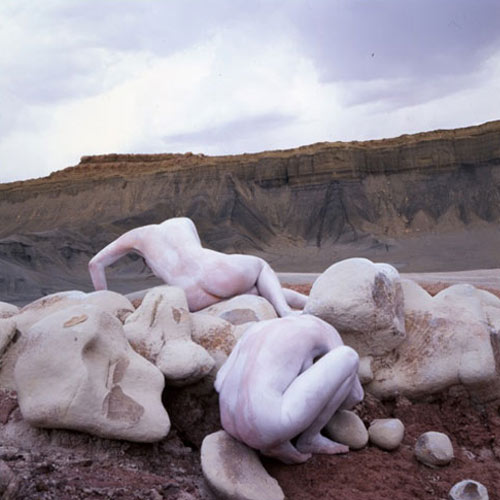
White people acting as rocks succeeded in to mix with the real ones.
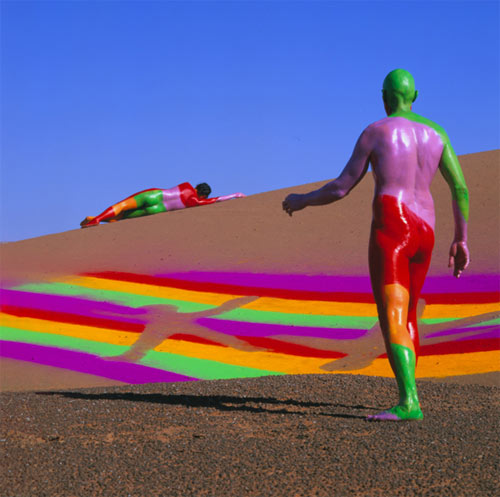
Quite intriguing shot where the artist made use of different colors.
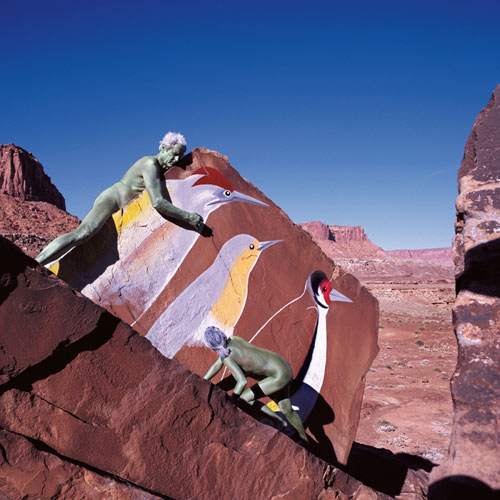
Penguins are here. A painting and painted bodies rolled into one.
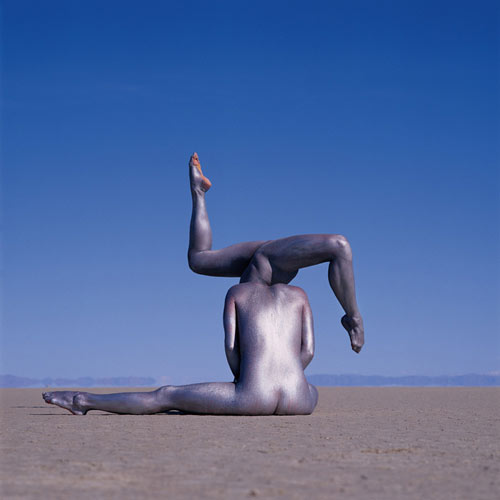
Two silver bodies creating a geometric look with.
Find the Artist
Impressed? Well, for sure you would be. Who would have thought that the masterpieces you see above can actually be possible? It is indeed amazing how the art of man and the art of nature can be united. Catch up with the latest works of Bourdier from his website.







Really great click,
every still picture says its own story.
unbelievable what a great post thanks for this 🙂